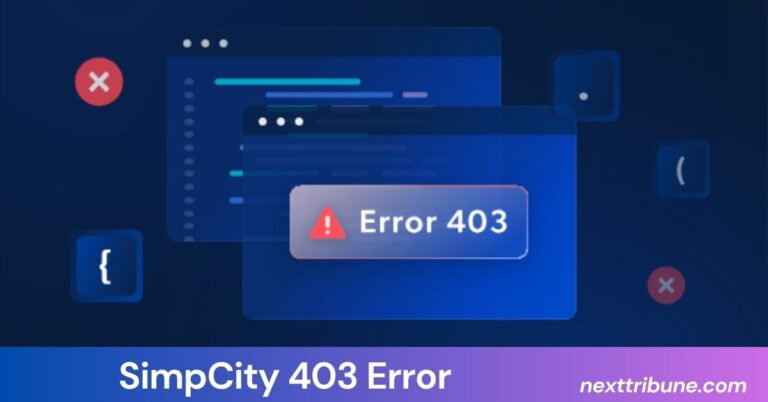
In today’s rapidly evolving world, the need for innovative problem-solving approaches is more crucial than ever. The challenges we face—whether in technology, environment, healthcare, or societal issues—often transcend the boundaries of any single discipline. To address these multifaceted problems, a new paradigm has emerged: Transds, short for transdisciplinary approaches.
At its core, Transds represents a framework focused on transition, transformation, and adaptability. It’s about transcending traditional academic and professional boundaries, bringing together diverse perspectives to create holistic solutions. In this article, we will explore the concept of Transds, its core principles, its applications, and how it fosters the collaboration required to solve the complex challenges of the modern world.
What is Transds? A Deeper Understanding
Transds is not just a methodology; it is a mindset that promotes breaking down silos. It draws on the strengths of multiple disciplines to solve problems that cannot be fully understood or addressed by one discipline alone. It goes beyond interdisciplinary work (which involves experts from different fields working together) by fostering collaboration that integrates knowledge from diverse fields into a unified approach.
Transds challenges the idea of working in isolation and instead encourages the exchange of knowledge, methodologies, and perspectives from various domains. By combining insights from science, technology, the humanities, and other sectors, Transds creates solutions that are more comprehensive and sustainable.

The Core Elements of Transds
- Integration of Knowledge: Transds brings together experts from a variety of disciplines to create a shared understanding of complex issues.
- Problem-Solving Approach: Rather than viewing challenges through the lens of a single discipline, Transds encourages thinking about problems holistically, addressing multiple aspects simultaneously.
- Adaptability and Flexibility: Transds approaches are designed to be adaptive, allowing for real-time adjustments as new information arises or conditions change.
- Collaboration Across Boundaries: Transds fosters collaboration not just among different fields of knowledge but also among different cultural, organizational, and institutional perspectives.
The Importance of Transds in Modern Problem-Solving
In an age of rapid technological change, environmental crises, and social transformation, traditional methods of problem-solving are often inadequate. Transds provides an avenue for addressing these challenges by fostering creativity, innovation, and comprehensive solutions.
For example, in the field of climate change, solutions cannot be developed solely by environmental scientists or policymakers. They require the integration of insights from economics, technology, sociology, and ethics. Similarly, in healthcare, solving issues such as pandemics or mental health crises requires collaboration between medical professionals, sociologists, economists, and technology experts.
Transds helps to connect these diverse areas, ensuring that solutions are more effective, inclusive, and sustainable.
How Does Transds Work in Practice?
Transds is often implemented through collaborative teams, research initiatives, or projects that span across various sectors and disciplines. These collaborations might take place in universities, research centers, or even corporate and governmental settings. Here’s how Transds is typically applied in practice:
1. Collaborative Research and Education
Many universities and research institutions are embracing Transds by creating programs and research centers that encourage collaboration between different academic departments. For instance, a university might create a center for “Sustainable Development and Innovation” where experts in environmental science, economics, engineering, and social science work together to tackle global sustainability challenges.
2. Industry and Government Collaboration
In the business world, Transds approaches are being adopted by companies that need to tackle global challenges such as climate change, resource scarcity, and global health crises. For example, multinational corporations working in supply chain management may engage with environmental scientists, social theorists, and economists to create sustainable business practices.
Similarly, government organizations are applying Transds frameworks to address complex societal issues such as income inequality, healthcare accessibility, and climate change mitigation.
3. Public Health and Healthcare Innovation
Public health is another area where Transds approaches are playing an important role. By integrating medical professionals, sociologists, policymakers, and community leaders, solutions can be crafted that address not only the medical but also the social and economic determinants of health.
Transds in Action: Case Studies
1. The 2030 Agenda for Sustainable Development
A prime example of Transds in action is the 2030 Agenda for Sustainable Development, adopted by all United Nations Member States in 2015. This agenda emphasizes the interconnectedness of the 17 Sustainable Development Goals (SDGs), such as eradicating poverty, achieving gender equality, and ensuring clean water and sanitation.
Each SDG requires input from diverse sectors: environmental scientists, social activists, economists, urban planners, and more. By adopting a Transds approach, the global community is working toward solutions that integrate the best practices from across disciplines to create lasting and inclusive solutions.
2. The Development of Smart Cities
Another example is the development of smart cities, which rely on Transds frameworks to bring together urban planners, engineers, environmental scientists, and social workers to create cities that are not only technologically advanced but also socially and environmentally sustainable. The collaboration between these disciplines helps ensure that smart cities are built with a focus on inclusivity, sustainability, and livability.
Also Read: VIPRow Alternative : Free Sports Streaming
3. Addressing Global Health Crises
Global health initiatives, particularly those related to infectious diseases such as COVID-19, often involve Transds teams. These teams combine the expertise of epidemiologists, medical professionals, public health experts, data scientists, and sociologists to address the multifaceted nature of pandemics.
The development of vaccines, for example, not only required input from biologists and chemists but also needed the collaboration of experts in logistics, public policy, and communication to ensure the equitable distribution of vaccines across the globe.
Transds and the Future: Embracing a Transdisciplinary World
As the world faces increasingly complex problems, the importance of Transds will only continue to grow. The future will require solutions that go beyond the boundaries of traditional disciplines and encourage collaboration and integration at every level. With the rise of global interconnectedness, it’s clear that Transds will be essential for addressing issues that transcend national borders, such as climate change, economic instability, and public health.
To further develop Transds, individuals, organizations, and educational institutions need to embrace new ways of thinking. This includes fostering curiosity, encouraging lifelong learning, and promoting interdisciplinary collaboration.
Also Read: Prosecchini: The Culinary Delight That’s Captured Hearts and Taste Buds Everywhere
FAQs About Transds
What makes Transds different from interdisciplinary work?
While interdisciplinary work involves experts from multiple fields working together, Transds goes a step further by integrating knowledge and methods from various disciplines into a unified approach. It focuses on breaking down the boundaries between fields to create holistic solutions.
How can Transds be implemented in education?
Transds can be implemented in education by creating programs that encourage students to engage with multiple disciplines. Universities can establish centers that promote collaboration between departments and offer courses that combine knowledge from different fields.
What are some examples of successful Transds projects?
Successful Transds projects include the development of the 2030 Agenda for Sustainable Development, smart city initiatives, and global health responses like the COVID-19 vaccine distribution. These projects required collaboration across a wide range of disciplines.
Why is Transds important in tackling global challenges?
Global challenges like climate change, pandemics, and social inequality cannot be solved by one discipline alone. Transds allows for the integration of diverse knowledge and skills to create more comprehensive and effective solutions.
Can Transds be applied in the private sector?
Yes, many businesses are now using Transds approaches to tackle complex challenges such as sustainability, innovation, and resource management. Companies that embrace Transds are better equipped to address both current and future global challenges.
Conclusion: Transds as a Path to a Sustainable Future
In conclusion, Transds represents a forward-thinking approach to problem-solving that is essential in today’s world. By embracing collaboration across disciplines and focusing on adaptability, Transds offers solutions to some of the most pressing global issues. As the world continues to face increasingly complex challenges, the Transds framework will be critical in creating sustainable, equitable, and innovative solutions.
This holistic, integrated approach will shape the future of problem-solving, ensuring that we can meet the challenges of tomorrow with the combined knowledge and expertise of today.



